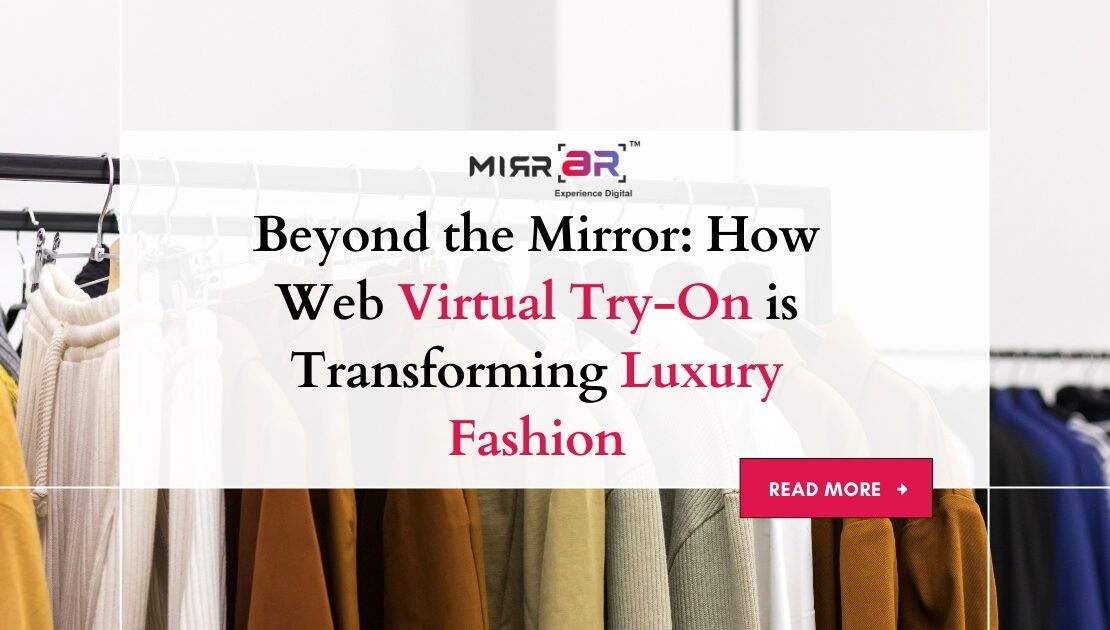
In an industry synonymous with elegance, exclusivity, and innovation, luxury fashion has always been at the forefront of adopting cutting-edge technologies. As the retail landscape evolves, luxury brands are now embracing Web Virtual Try-On (VTO) technology, a game-changing tool that blends digital sophistication with personalized shopping experiences. This innovation not only addresses the challenges of online shopping but also redefines how consumers interact with high-end fashion brands.
The Rise of Virtual Try-On in Luxury Fashion
Online shopping has become the preferred mode of purchasing for many consumers, but for luxury brands, the inability to offer tactile experiences online posed a significant challenge. How do you replicate the feel of trying on a $5,000 dress or a handcrafted watch without stepping into a boutique? This is where Web Virtual Try-On steps in.
Powered by Artificial Intelligence (AI) and Augmented Reality (AR), VTO technology enables consumers to visualize how clothes, accessories, or jewelry will look on them in real-time. Through seamless web integrations, shoppers can now experience the exclusivity and personalization of luxury retail from the comfort of their homes.
Enhancing Personalization for Discerning Shoppers
One of the most significant advantages of VTO for luxury fashion brands is the ability to offer hyper-personalized experiences. Unlike traditional online shopping, where consumers are limited to static images and size charts, VTO allows users to try on garments virtually, adjusting to their body type, facial features, and personal preferences.
For example, brands like Gucci and Chanel are integrating VTO tools into their e-commerce platforms, allowing customers to virtually try on sunglasses, watches, and other high-end accessories. This level of personalization builds trust and offers a bespoke experience that reflects the exclusivity luxury shoppers expect.
Reducing Return Rates with Realistic Previews
One of the biggest challenges in e-commerce, particularly for luxury brands, is high return rates. Customers often return products that don’t meet their expectations regarding fit, style, or overall appearance. VTO technology addresses this issue by providing a realistic preview of how a garment or accessory will look on the buyer.
By offering a true-to-life visualization, VTO reduces the guesswork involved in online shopping. Consumers can see how an item drapes on their body, complements their skin tone, or matches their personal style, significantly lowering the chances of post-purchase dissatisfaction. This leads to fewer returns and improves customer retention for brands.
Creating Immersive Brand Experiences
Luxury fashion is not just about products—it’s about experiences. High-end brands are known for crafting memorable in-store experiences, from personalized fittings to exclusive events. Virtual try-on technology brings this level of immersion to digital platforms, enabling brands to create unique, interactive experiences for their customers.
Imagine virtually trying on a custom-made suit while receiving real-time feedback from a digital stylist or exploring a virtual showroom where customers can interact with different collections. Platforms like MirrAR are already making this a reality by offering luxury brands an opportunity to replicate the exclusivity of in-store shopping in the digital realm.
Boosting Consumer Confidence and Purchase Intent
When investing in luxury fashion, consumers seek confidence in their choices. They want to know that a product will meet their high expectations before committing to a significant purchase. Web-based virtual try-on technology helps eliminate doubts by offering a clear, accurate visualization of the product in real-time.
For instance, a customer unsure about a luxury watch’s size and appearance can virtually try it on their wrist using AR technology. This increased confidence not only improves the shopping experience but also drives higher conversion rates, as consumers are more likely to complete their purchase when they’re certain of their choice.
Also Read: Unlocking the Potential of Web Virtual Try-On for High-End Fashion Brands
Bridging the Gap Between Physical and Digital Retail
While luxury brands continue to maintain their brick-and-mortar presence, the rise of VTO technology is effectively bridging the gap between physical and digital shopping experiences. Consumers can now enjoy the best of both worlds—trying on products online while still having the option to visit a store for the final purchase.
Some brands are even integrating in-store virtual try-on stations to offer a seamless hybrid experience. Customers can virtually experiment with different styles and colors before physically trying on a final selection, enhancing both convenience and personalization.
Encouraging Experimentation and Discovery
In luxury fashion, customers often stick to familiar styles and brands. However, virtual try-on technology encourages experimentation by allowing users to try on products they wouldn’t normally consider. A customer loyal to classic black handbags might experiment with bolder colors or limited-edition pieces, discovering new styles in the process.
This sense of discovery can lead to increased sales and help brands showcase a wider range of their offerings. For high-end labels, encouraging customers to explore new styles without the pressure of committing to a purchase is a powerful way to drive engagement and loyalty.
Sustainability and the Future of Luxury Fashion
Sustainability is becoming a key focus in the luxury fashion industry, and virtual try-on technology plays a crucial role in supporting this shift. By reducing the need for physical samples and minimizing returns, VTO helps brands lower their carbon footprint and waste.
Additionally, luxury brands can leverage virtual showrooms and digital fashion events to showcase their collections without the need for extensive physical production, further promoting sustainable practices within the industry.
Conclusion: The Future of Luxury Shopping is Virtual
The integration of Web Virtual Try-On technology is transforming luxury fashion by enhancing personalization, reducing returns, and creating immersive brand experiences. As AI and AR technologies continue to evolve, VTO will become even more sophisticated, offering hyper-realistic visuals and greater customization options.
Brands that embrace this digital shift—such as those using platforms like MirrAR—will not only stay ahead of the curve but also strengthen their connection with a new generation of tech-savvy luxury consumers.
In a world where exclusivity meets innovation, the future of luxury shopping lies beyond the mirror—in the seamless, interactive experiences that virtual try-on technology delivers.
